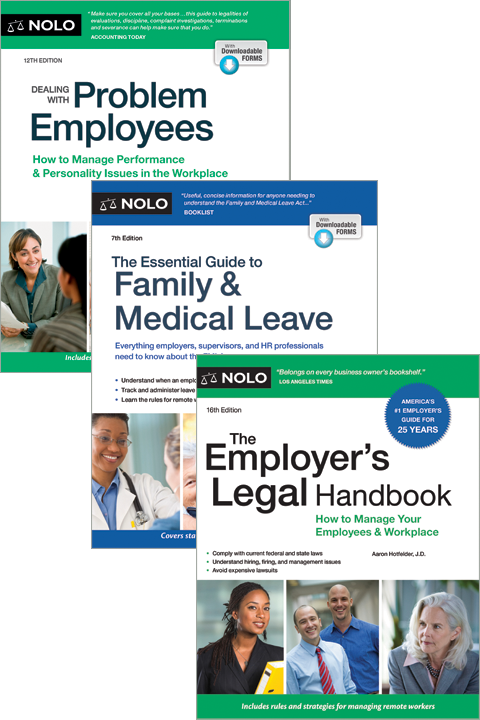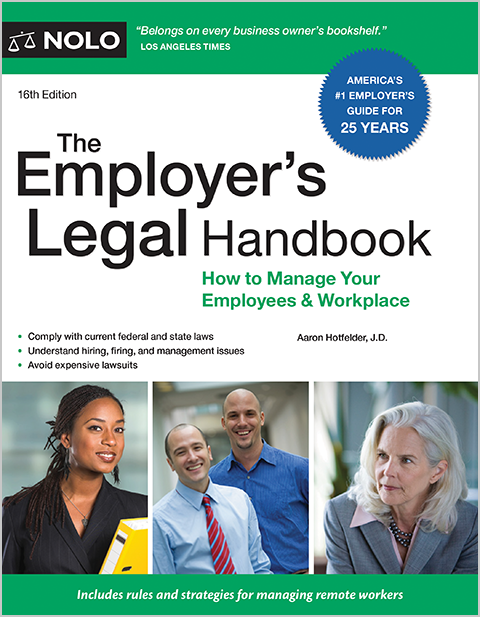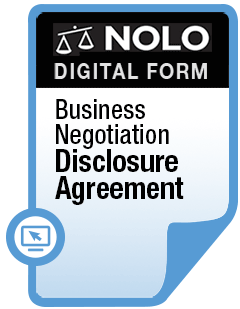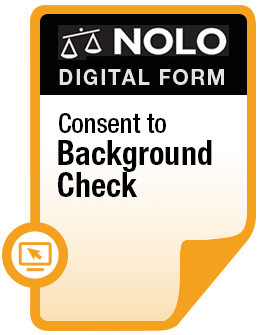Essential steps to take after an employee quits or is fired.
- 1. Issue a final paycheck.
- 2. Reimburse expenses.
- 3. Collect company property.
- 4. Cancel credit and phone cards.
- 5. Deactivate passwords.
- 6. Arrange for continued benefits.
- 7. Decide who will handle projects.
- 8. Deal with confidentiality issues.
- 9. Delete the employee's name from documents.
- 10. Assign a contact person.
1. Issue a final paycheck.
State laws dictate when a departing employee must be paid, and the rules sometimes depend on whether an employee quit or was fired. These time limits can be very short (you may have to pay an employee on his or her last day of work, rather than waiting for your usual payroll cycle). In some states, the final paycheck must also include all accrued unused vacation time. For more information, see Final Paychecks for Departing Employees. Once the final paycheck has been cut, have your payroll or accounting clerk remove the employee's name from your payroll.
2. Reimburse expenses.
If the departing employee has paid for expenses that the company will cover (for business-related travel or training, for example), reimburse the employee promptly.
3. Collect company property.
Make sure you get back any company property the employee has before he or she walks out the door for the last time. Among the things you might need to collect are a company car, keys and security cards, company credit cards, long distance cards, computers, cell phones, company manuals, and confidential company files.
4. Cancel credit and phone cards.
If you have issued the employee a company credit card, long distance phone card, or other cards or account numbers that allow the employee to charge amounts to the company, cancel them right away.
5. Deactivate passwords.
Once the employee has finished his or her last day of work, turn off his or her passwords to the computer system, telephone system, and building, if applicable.
6. Arrange for continued benefits.
If you have at least 20 employees and you offer group health insurance coverage, a federal law called the Consolidated Omnibus Budget Reconciliation Act (COBRA) requires you to give departing employees the opportunity to continue their coverage for a specified period of time. Employees who want continued coverage must pay the premiums; some employees are eligible for a subsidy of 65% of the cost. Some states also have insurance continuation laws --and some of these laws apply to smaller employers. For more information on COBRA, see The Essential Guide to Federal Employment Laws, by Lisa Guerin and Amy DelPo (Nolo). For information on your state's laws, contact your state labor or insurance department.
7. Decide who will handle projects.
Create a plan for handing off the employee's work to other employees. Determine who will handle the employee's clients or accounts. It may be a good idea to start this process early, so the departing employee can bring coworkers up to speed on pending projects before leaving.
8. Deal with confidentiality issues.
If the employee had access to trade secrets or other confidential company information, debrief the employee on his or her obligation not to reveal that information. If the employee signed a nondisclosure, nonsolicitation, or noncompete agreement, review it with the employee to make sure his or her responsibilities are clear.
9. Delete the employee's name from documents.
If the employee's name appears on anything available to those outside of your company -- such as letterhead, brochures, or your website -- make the necessary changes. Also drop the employee from interoffice lists, such as phone rosters, routing slips, and email groups.
10. Assign a contact person.
The departing employee may have questions or need information after leaving the company. For example, the employee may need to know whose name to use as a reference, how to sign up for continuing benefits, or how to handle pension or retirement account issues. Assign someone to be the point person for providing this information.
- 1. Issue a final paycheck.
- 2. Reimburse expenses.
- 3. Collect company property.
- 4. Cancel credit and phone cards.
- 5. Deactivate passwords.
- 6. Arrange for continued benefits.
- 7. Decide who will handle projects.
- 8. Deal with confidentiality issues.
- 9. Delete the employee's name from documents.
- 10. Assign a contact person.



